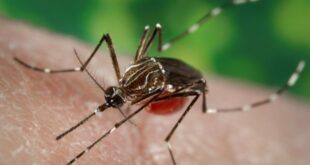‘What we saw this year was totally different compared to other years.’

Critically endangered North Atlantic right whales arrived in the Gulf of St. Lawrence later than usual in 2023 and then showed up in places they’ve never been seen before, according to fishermen, scientists and Canadian fisheries managers.
“What we saw this year was totally different compared to other years,” said Marcel Hebert of the Acadian Crabbers Association in Shippagan, N.B.
“The North Atlantic right whale were found in very shallow waters, under 20 fathoms. It’s the first time we saw that since 2017 when we started to watch.”
Their first appearance in the Gulf was a disastrous surprise for a species on the brink of extinction and the people who earn their living in those waters.
Twenty of the whales died in the Gulf between 2017 and 2019. The population is estimated at about 340.
Entanglement in fishing gear is a major threat.
Inshore waters
Brett Gilchrist, director of national programs and fisheries resource management with Fisheries and Oceans Canada, agrees this has been an unusual year.
“We have had several detections this year in shallow waters,” Gilchrist said. “We’ve had detections in and around P.E.I. that, frankly, haven’t been seen before. A lot of harvesters are concerned about that.”
Gilchrist said the whales have been detected in shallow waters in the Bay of Fundy in the past. It is not clear why they are doing it this year.
“They tend to spend less time and we tend to find mother-and-calf combinations in shallow waters that perhaps is a safety thing for that pair, and it may be a food distribution issue as well.”
N.B. crab fleet gets a break
Larger numbers of whales showed up later in the season this year. That has meant far fewer early season fishery closures.
In May 2023, 23 whales were detected at 18 locations compared to 96 in 86 locations in May 2022, said Hebert, who closely tracks them.

The difference was crucial for crab fishermen who were quickly able to land 91 per cent of the southern Gulf quota of 35,000 tonnes.
“It is very important for the snow crab harvesters to catch most of their quota before the end of May because after that, we have high numbers of North Atlantic right whales in the Gulf and they want to protect them,” said Hebert.
“That is fantastic.”
Hard on harvesters
In Atlantic Canada, a single right whale detection closes a 2,100 square kilometre area of open water for 15 days and in the Gulf for the entire season if they keep showing up or stay.
“Let’s be honest, this is hard for harvesters,” Gilchrist said.
On Monday, the Area 19 snow crab fishery in western Cape Breton was shut down by a right whale detection just days after its season opened.
The closure is a blow to fishermen whose season is from mid-July to mid-September and, in reality, much shorter since the quota can be caught in little over a month.
Worse still, prices have fallen to around $2.35 a pound — half of last year’s price.
Whale detection numbers about the same
While the right whales were being detected in different places by July 10, the detection numbers were about the same — 471 in 2023 and 499 in 2022. The same whale can be detected more than once.
The Shediac Valley off northern P.E.I. remains a consistent location for right whales, otherwise distribution is relatively unpredictable, according to DFO.
The number of season-long closures is down in 2023, but temporary closures, like the one underway in Cape Breton, are up.
Survey flights reduced by bad weather
Right whales are monitored three ways: aerial surveillance, acoustic buoys and gliders in the water.
The number of flights was reduced by poor weather this year, but Gilchrist said, “The flights are relatively comparable.”

Sean Brillant of the Canadian Wildlife Federation said even a small reduction in surveillance means whales can be missed.
He said the whales are on the surface only 20 per cent of the time and if they don’t make noise they can be missed by acoustic sensors.
“So, we always need to be very cautious,” he said. “We know that this is an important feeding ground for them. We feel quite confident they’re going to keep coming back here for a while.”
ABOUT THE AUTHOR

Reporter
Paul Withers is an award-winning journalist whose career started in the 1970s as a cartoonist. He has been covering Nova Scotia politics for more than 20 years.
*****
Credit belongs to : www.cbc.ca
 Atin Ito First Filipino Community Newspaper in Ontario
Atin Ito First Filipino Community Newspaper in Ontario






